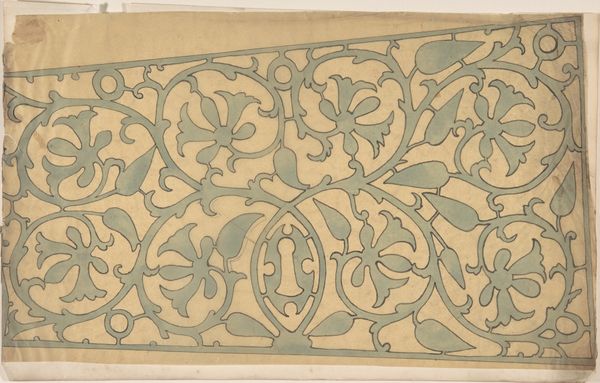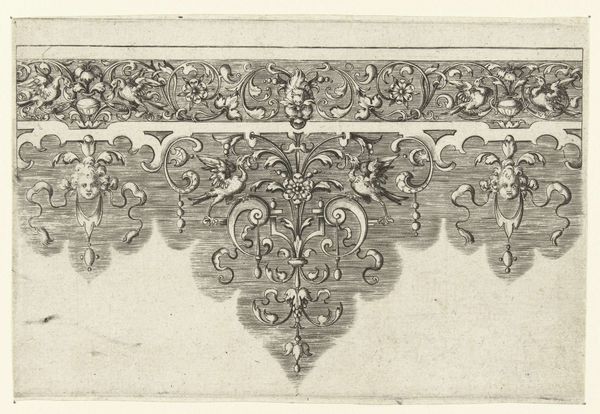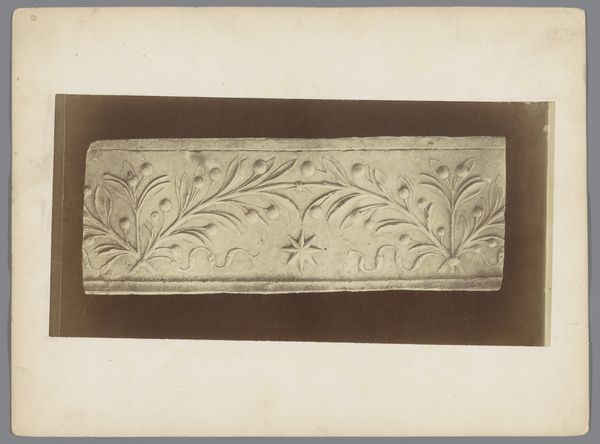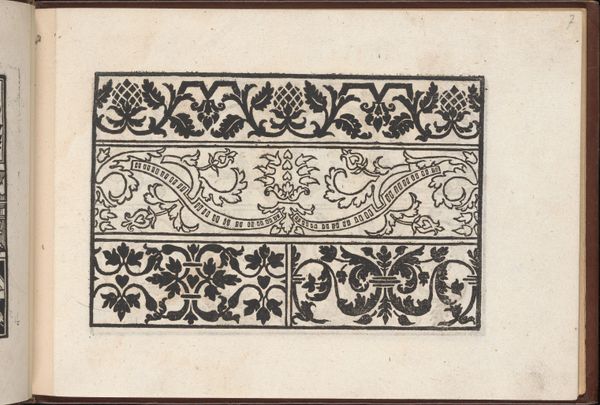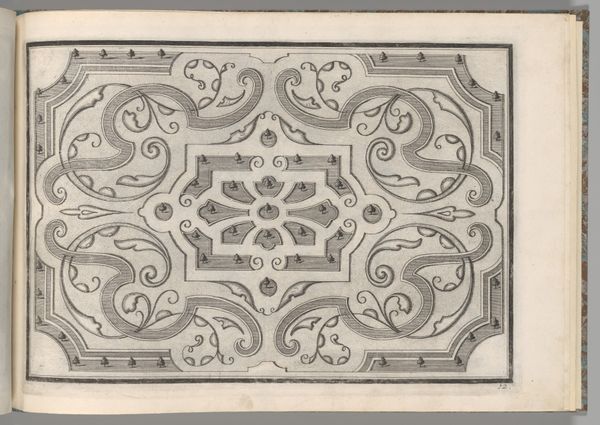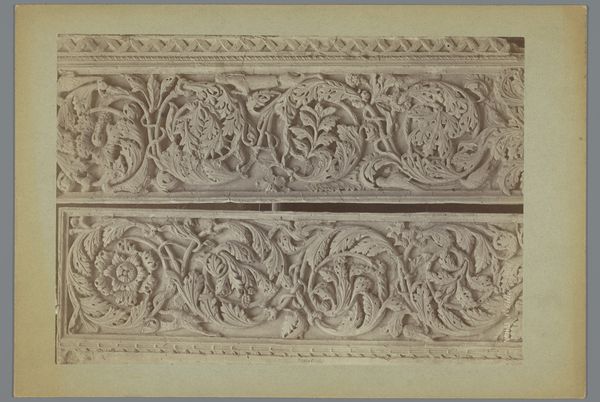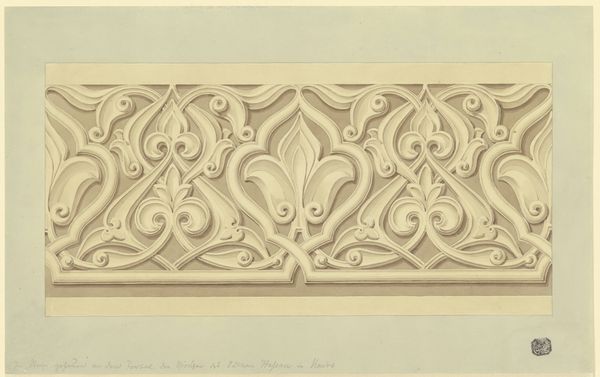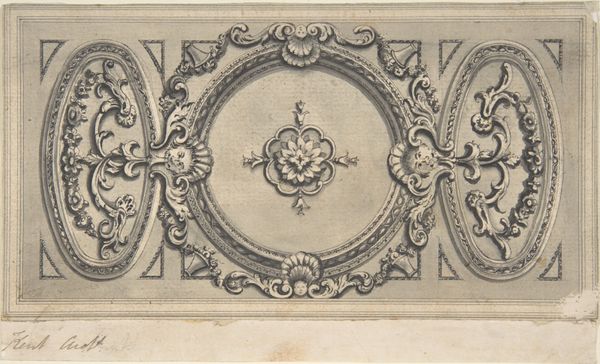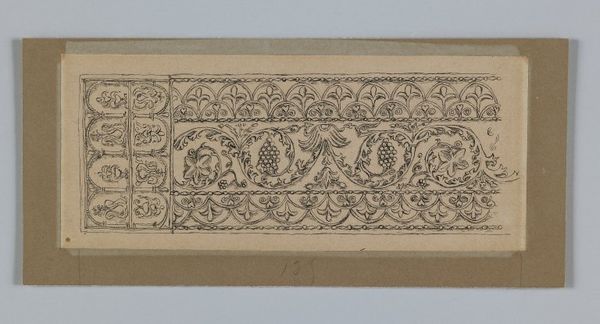
drawing, carving, tempera, print, gouache, relief, paper, fresco, watercolor, ink, pencil, chalk, graphite, marble
#
drawing
#
byzantine-art
#
medieval
#
carving
#
tempera
# print
#
gouache
#
relief
#
paper
#
form
#
fresco
#
watercolor
#
ink
#
geometric
#
pencil
#
chalk
#
graphite
#
marble
Dimensions: 108 × 162 mm
Copyright: Public Domain
Curator: My goodness, there’s a lightness and fragility to this that I find so unexpected in a carved piece. It almost feels like I could blow on it and the whole thing would simply float away. Editor: Indeed, and that tension is so crucial, wouldn't you say? We're observing what seems to be John Ruskin's rendition of a Byzantine column capital, currently housed here at The Art Institute of Chicago. His rendering—it looks like it employs graphite, watercolor, and perhaps even some gouache—captures a quality altogether rare. Curator: Watercolor for a marble carving? I love the cheeky audacity of that! You look at the density of the stone in life, and then you have Ruskin interpreting it through the airy kiss of watercolors. What year are we thinking this rendering was done? Editor: The Art Institute dates this simply as "n.d.", indicating uncertainty around the exact time of its creation. Though Ruskin's focus on architectural detail resonates strongly with the Gothic Revivalism sweeping Britain at the time. And in the drawing, look closely at the meticulously rendered acanthus leaves. There is such depth conveyed by the contrast between positive and negative space—shadow and light. He understood structure! Curator: It’s also funny when you realize that Ruskin hated ornament sometimes, right? He goes on about honest materials and structural integrity but here he is, obsessing over a fancy capital! The push and pull within his thought process are what fascinate me. You get that beautiful dance of intention and creation here. Editor: But isn't ornament itself integral? As decoration it simultaneously reveals and conceals structural logic—look at the vegetal forms spiraling outwards—mimicking natural growth. The whole design functions almost like a microcosm, symbolizing expansion and connectivity. Curator: And a great exercise for observation and line. It’s almost therapeutic to trace it with your eye, right? Editor: Absolutely, tracing not only the contours of its shape, but those of Ruskin's fascination. Each carved frond is a lesson in observation, carefully brought into delicate life. Thank you for sharing, it seems we both took a little bit away from looking carefully.
Comments
No comments
Be the first to comment and join the conversation on the ultimate creative platform.
